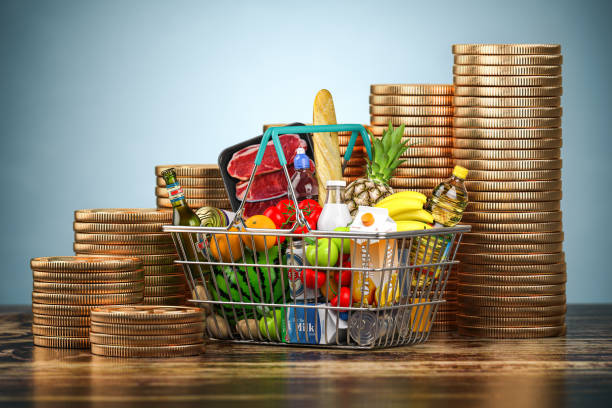July retail inflation eased to a four-month low of 6.71%, although it was still more than the RBI’s target.

Retail inflation decreased to 6.71 percent in July, the lowest level since March, yet continued to rise for a seventh consecutive month, above the RBI’s target range.
The most recent figure indicates that headline retail inflation has now exceeded the medium-term objective of 4% for 34 consecutive months and the upper bound of 6% of the Reserve Bank of India’s 2–6% tolerance range for seven consecutive months.)
The Consumer Price Index (CPI) was used to calculate India’s headline retail inflation rate, which dropped to a five-month low of 6.71 percent in July, according to information provided on August 12 by the Ministry of Statistics and Programme Implementation. Even though inflation reached a five-month low in July, it has now gone 34 straight months without falling inside the Reserve Bank of India’s (RBI) tolerance range of 2 to 6 percent and 4 percent, respectively.
The annual rate of retail inflation decreased to 6.71% in July, the lowest level since March, but remained above the upper bound of the Reserve Bank of India’s target range for seven consecutive months. With an annual rate of 7.01 percent in June, inflation remained over 7 percent for a third consecutive month.
Last month, declining gasoline prices and food prices—which make up about half of the CPI basket—helped slow the rate of increase in price pressures. The figures show that food inflation decreased from 7.75 percent in June to 6.75 percent in July 2022.
According to Upasna Bhardwaj, chief economist at Kotak Mahindra, “CPI headline inflation for July has slowed in line with our estimates, powered mostly by food inflation, but the core inflation remains excessive and sticky.”
“The next several readings are predicted to be slightly above 7%, and inflation is predicted to remain above the RBI’s upper threshold level of 6% until January 2023.” “Additionally, by the end of 2022, we anticipate the repo rate to be at 6%, followed by a pause and a change to a neutral policy stance.”
The recession worries that have driven down commodity prices throughout the world are mostly to blame for the downturn. Brent crude, the worldwide oil benchmark, is down almost 9% for the month and has fallen to pre-Ukraine crisis lows of below $100 a barrel.
This slowness is also a result of the delayed impact of the gasoline tax reduction. Additionally, government initiatives to lower import taxes and impose export limitations on wheat were helpful. Nevertheless, the RBI’s estimates indicate that inflation will continue to exceed its upper end of the 2–6% goal range, and price increases for goods and services are projected to increase at a rapid rate in the months to come.
The government’s efforts to limit consumer price rises may be less successful because of the unevenness of this year’s rainfall and a poor economy, so the near-term inflation prognosis is still extremely uncertain. The central bank has been instructed by the government to maintain retail inflation at 4%, with a tolerance threshold of plus or minus 2% of that rate, or 2% to 6%.
The RBI was forced to raise its key repo rate for the first time in four years due to the elevated inflation outlook. The rate was increased by 40 basis points (bps) during an off-cycle meeting in May, followed by a 50 basis point increase in June and a larger-than-expected 50 basis point increase this month, bringing the repo rate to 5.40 percent./cloudfront-us-east-2.images.arcpublishing.com/reuters/AGGZLFDJZFKD3HWUSHYMMQYWCM.jpg)
The recent inflation data indicates that interest rates are likely to continue climbing. The repo rate is the rate at which the RBI loans money to commercial banks. Earlier this month, the central bank maintained its 6.7% forecast for inflation for the current fiscal year and stated that for the first three quarters of 2022–2023, retail inflation would continue over the upper tolerance threshold of 6%.
Sources said on Thursday that the government aims to restrain price increases now that crucial conditions are favourable once more and that India is “likely to be the world’s fastest-growing economy this year and next.” According to a further analysis of the most recent statistics, rural India’s inflation rate significantly decreased in July from 7.09% to 6.80%.
The CPI inflation rate in urban areas dipped somewhat from 6.86% in June to 6.49% last month. The National Statistical Office (NSO) released more data on Friday, showing that industrial production increased 12.3% in June 2022 compared to a year earlier, down from a 19.6% gain in May.
Due to the coronavirus pandemic, industrial production was negatively impacted in March 2020 when it decreased by 18.7% and dropped by 57.3% in April 2020 as a result of a reduction in economic activity following the lockdown implemented to stop the spread of coronavirus illnesses.
Edited by Prakriti Arora




